
What risks can arise when working on a ladder?
These are primarily falls from height. Injuries with serious or even fatal consequences can occur not only when falling from high structures, but also from much lower heights, e.g. from ladders if they are used incorrectly. Falling from a ladder can have many causes – from the poor selection of a ladder to non-compliance with basic safety rules for work on ladders.
The following happened: occupational injury to a foreigner while descending from a ladder with fatal consequences
A worker from Romania (†48) was carrying out auxiliary work on the construction site under the supervision and direction of qualified workers. He was tasked with cleaning up materials from the construction site on the first floor and instructed to use the stairs in the building. For unidentified reasons, he used an aluminum ladder to access the terrace on the 2nd floor. When descending from the terrace using this ladder, the ladder slipped and the affected person fell from a height of about 2.9 meters with fatal consequences.
Where to find the requirements for ladders?
The technical requirements for ladders are specified in EN 131 Ladders. Safety requirements for the use of ladders are set out in Government Regulation No. 362/2005 Coll., on more specific requirements for safety and health protection at workplaces with the risk of falling from height or into depth.
"Ten Commandments" of safety when working on a ladder
- Only use the ladder for short-term, physically undemanding work with simple tools.
- Do not work on the ladder using dangerous tools or equipment (portable chainsaws, pneumatic tools, etc.)!
- Do not use ladder on slippery surfaces (ice, smooth surfaces) or excessively soiled surfaces (spilled oil) unless effective measures are taken to prevent the ladder from slipping.
- For work where both hands must be kept above the head, use a different safer device for working at heights (e.g. work platform, ladder with platform, mobile scaffolding, etc.). Obrázek
 Obrázek
Obrázek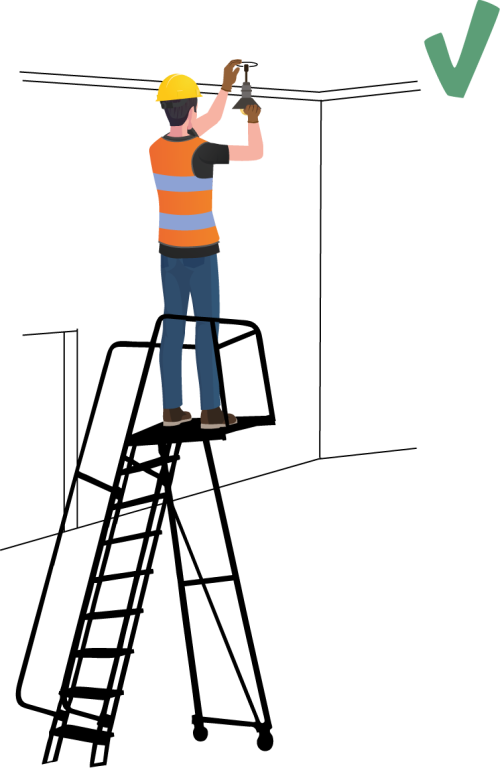
- Set up the ladder on the floor (terrain) so that it has sufficient stability throughout its use. Secure the ladder against shifting, slipping, lateral deflection, overturning, or opening. Obrázek
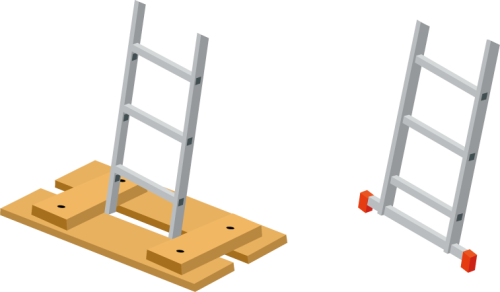
- When ascending and descending the ladder, hold firmly onto the ladder. Follow the three contact points rule. Obrázek
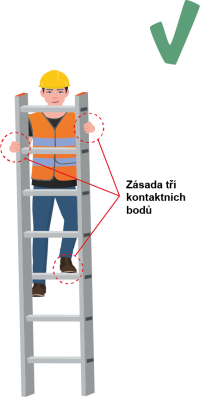
- Both upper ends of the side rails of simple ladders must securely lean against a vertical surface.
- Leveling of uneven terrain with improvised supports (bricks, plinths, etc.) is prohibited!
- Ladders used for ascent must exceed the upper landing surface level by at least 1.1 m; the overhang of the ladder can be substituted by a fixed part of the construction that can be reliably grasped; it is not allowed to step on the overhanging part of the ladder. Obrázek
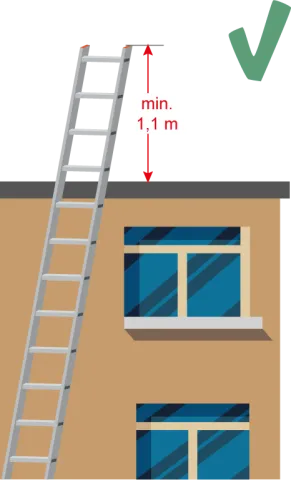 Obrázek
Obrázek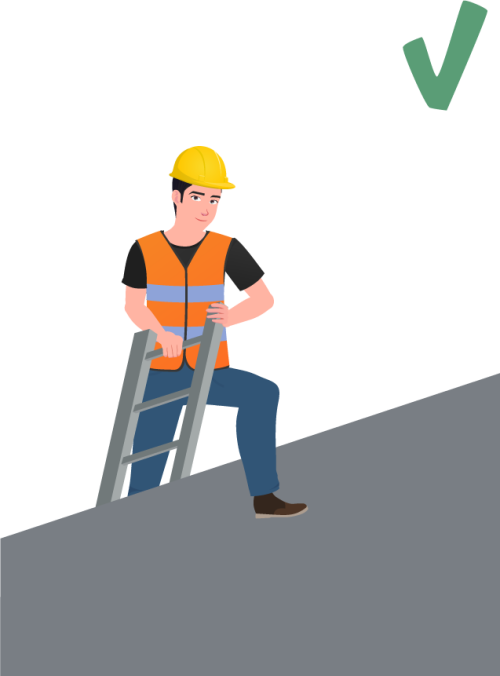
- There must be at least 0.18 m of free space behind the rungs.
- A space of at least 0.6 m must be maintained at the base of the ladder from the access side.
- For telescopic, multipurpose, and double ladders, ensure that hooks, locks, and other securing devices are functional and in the correct position. Use ladders only in the assembly specified by the manufacturer.
- The ladder slope must not be less than 2.5:1, i.e. approximately 68° from the horizontal plane. The slope of step ladders, both simple and double (when opened), according to ČSN EN 131 must be 65°–75°, for platform ladders 60°–70° from the horizontal plane. Obrázek
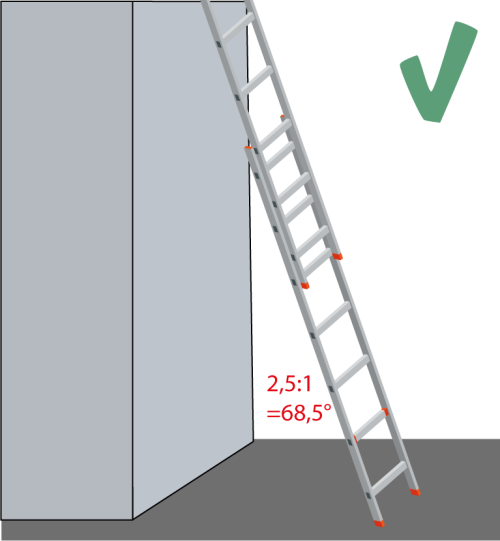
- For extendable ladders, sufficient overlap between the individual parts shall be ensured according to the manufacturer's instructions.
- Do not exceed the maximum load of the ladders specified by the manufacturer!
- Do not use the ladder as a transition bridge – except when specifically designated by the manufacturer for such use.
- When climbing, descending and working on the ladder, face the ladder! You must be able to hold on with both hands. Obrázek

- Simultaneous work of multiple persons on one ladder is prohibited! Only one person is allowed to climb, descend and work on a ladder. Obrázek
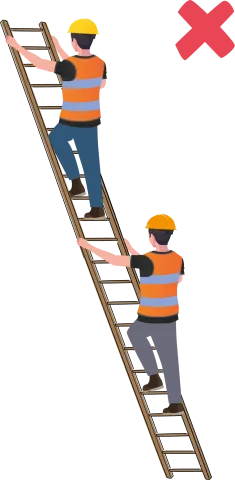
- When working on a ladder, do not lean sideways or backwards – there is a risk of losing stability and falling! Obrázek

- Do not use a support or double ladder for access to a higher level

- Do not carry up or (carry down) a load weighing more than 15 kg on a ladder!
- Keep auxiliary material, tools (other aids needed for work) in a bag, in a belt designed for it, or secured to the ladder in such a way that it does not compromise the stability of the ladder or the worker.
- When working on a ladder, stand at a safe distance from its upper end (at least 0.8 m for simple ladders and 0.5 m from the end of double ladders).
- Always follow the ladder manufacturer's instructions.
- Beware of handling and carrying metal ladders near live parts! Keep a safe distance! Secure exposed electrical wires in the work area before starting work. Obrázek

- When working on a ladder, where the worker's feet are at a height greater than 5 m, use personal protective equipment against falling (PPE).
- Do not use portable wooden ladders longer than 12 m.
- When issuing from the warehouse, receiving it back, and before each use, perform a visual inspection of the ladders.
- The employer shall ensure that ladder inspections are carried out in accordance with the instructions for use.
More detailed safety requirements for using ladders can be found here:
Annex to Government Regulation No. 362/2005 Coll., on more specific requirements for safety and health protection at workplaces with the risk of falling from height or into depth
EN 131 Ladders